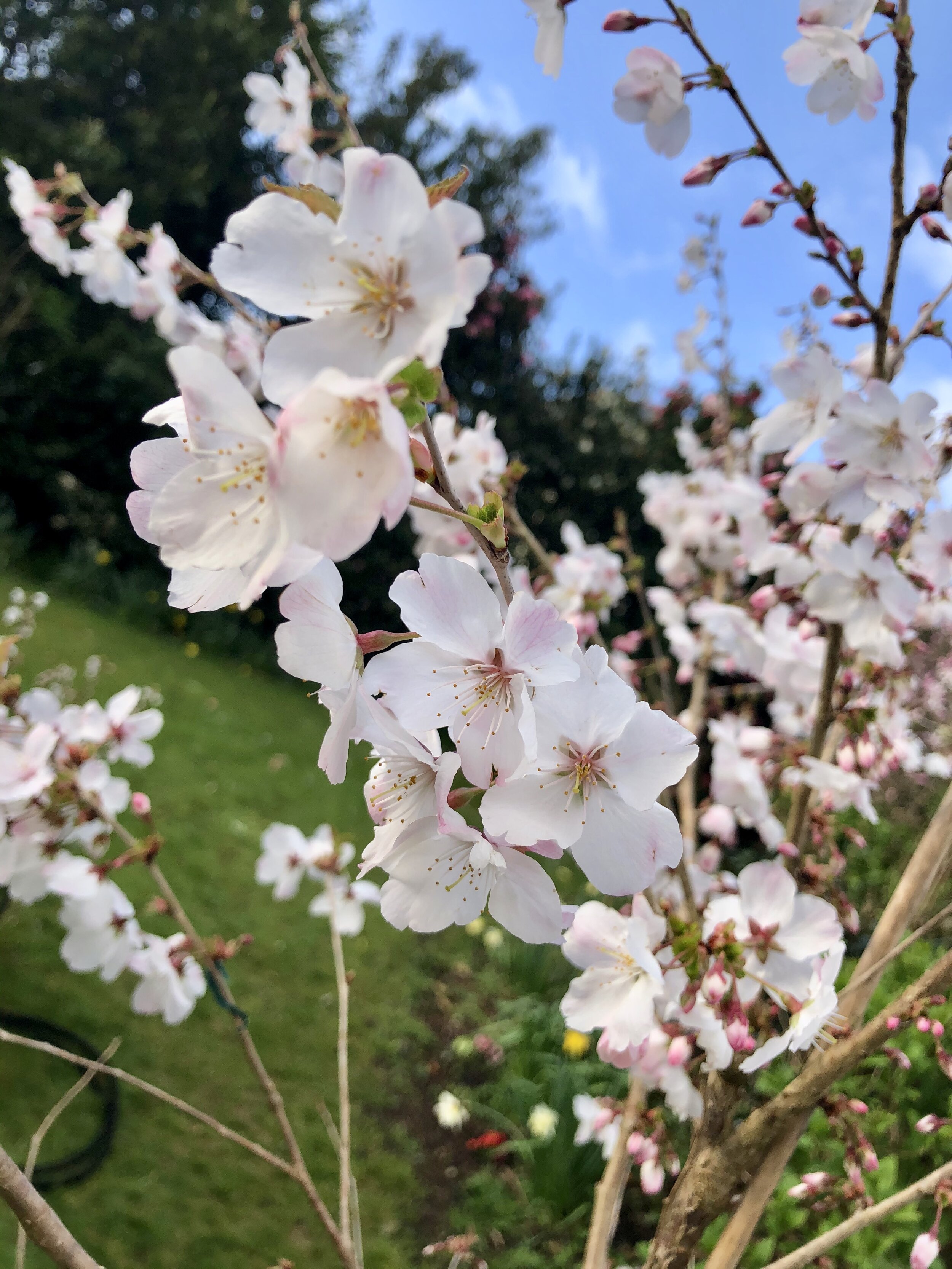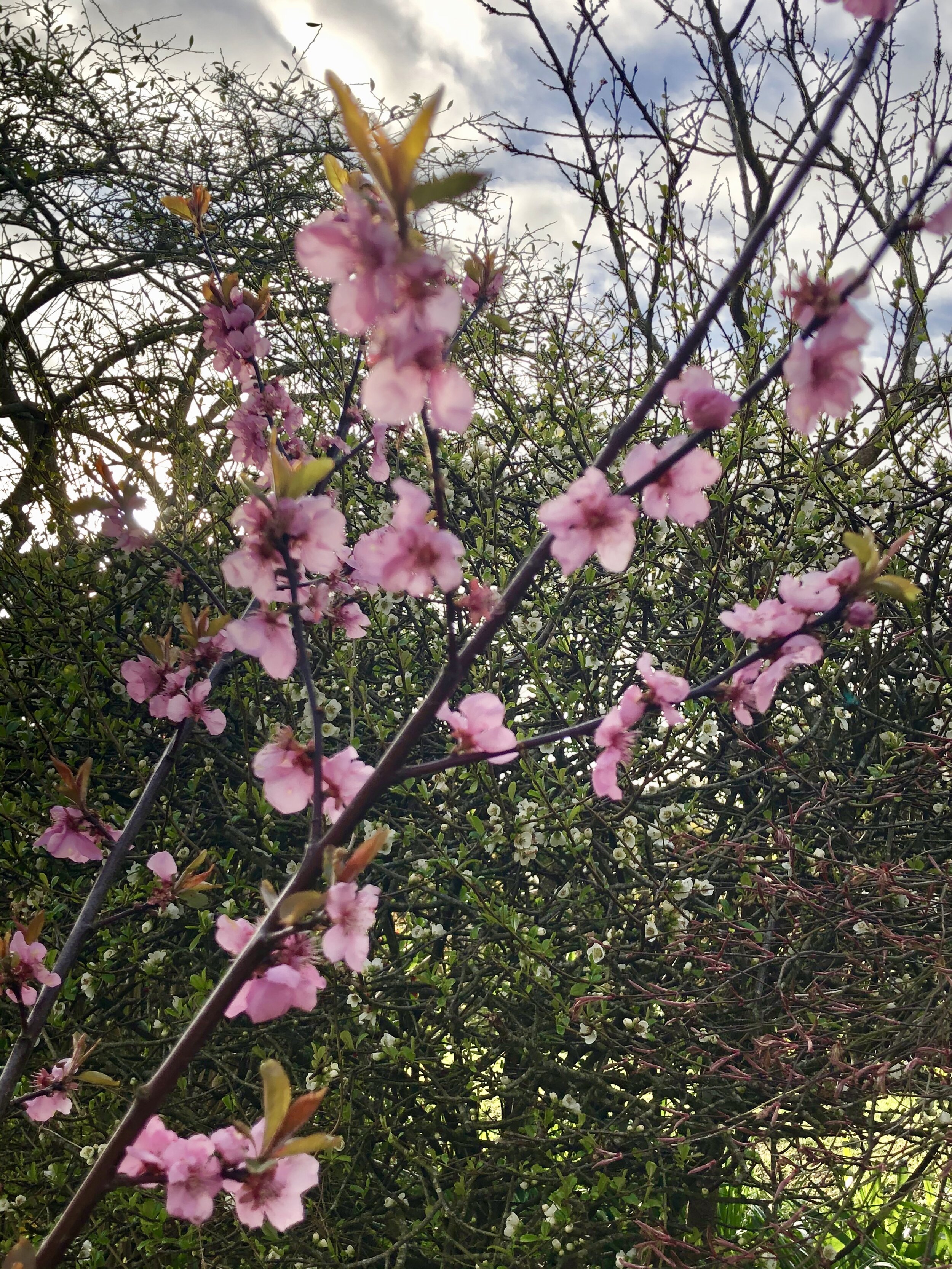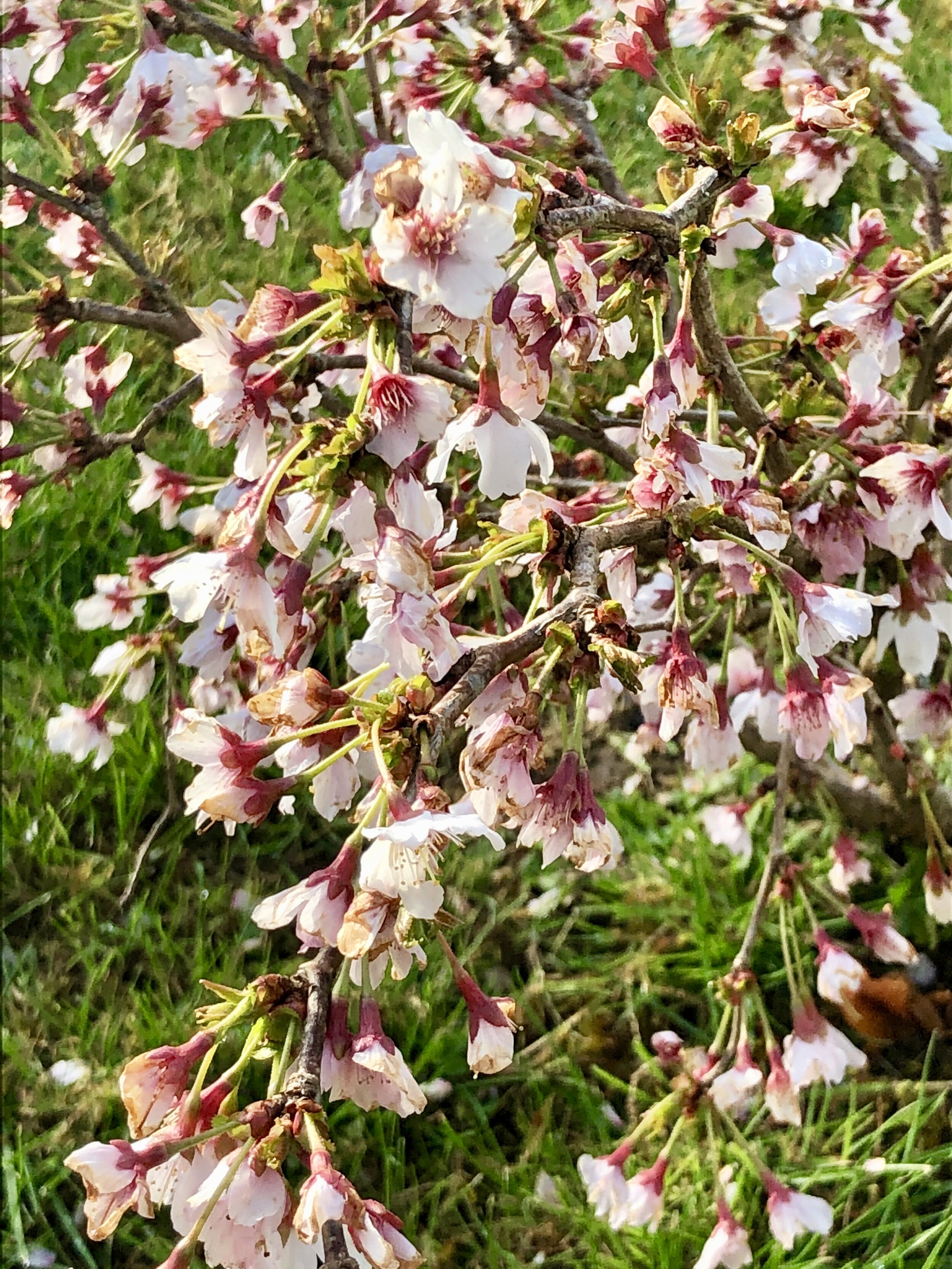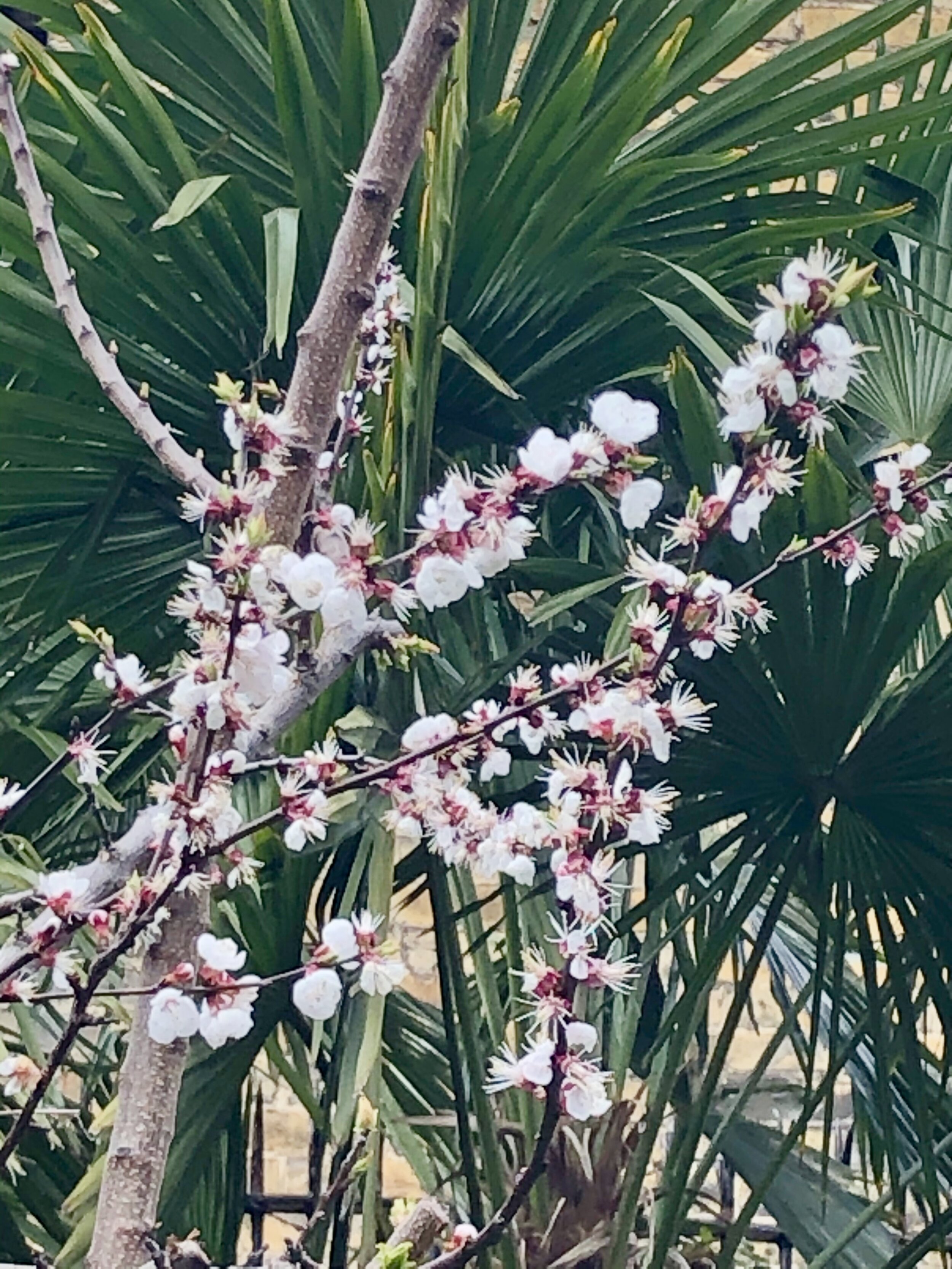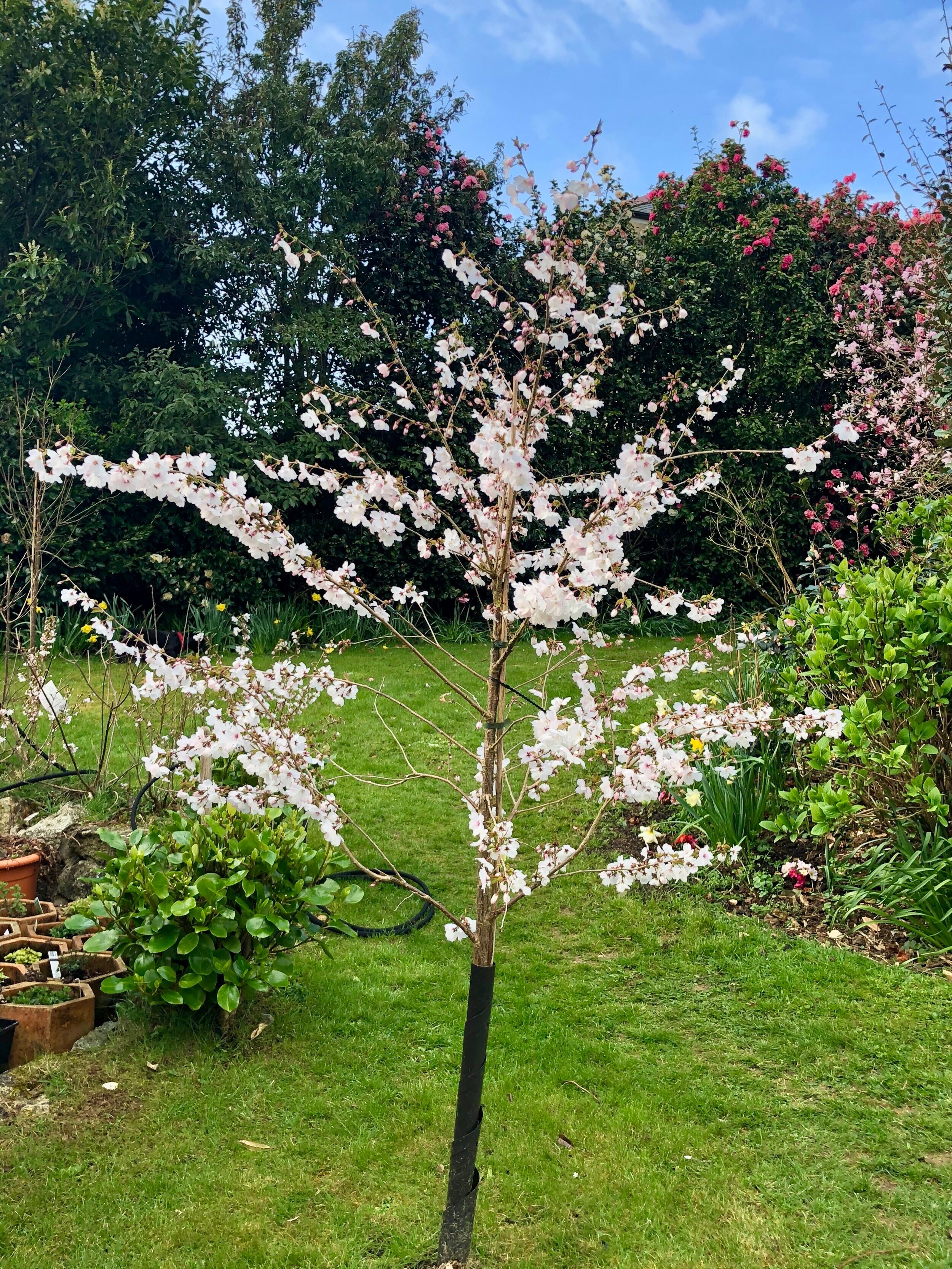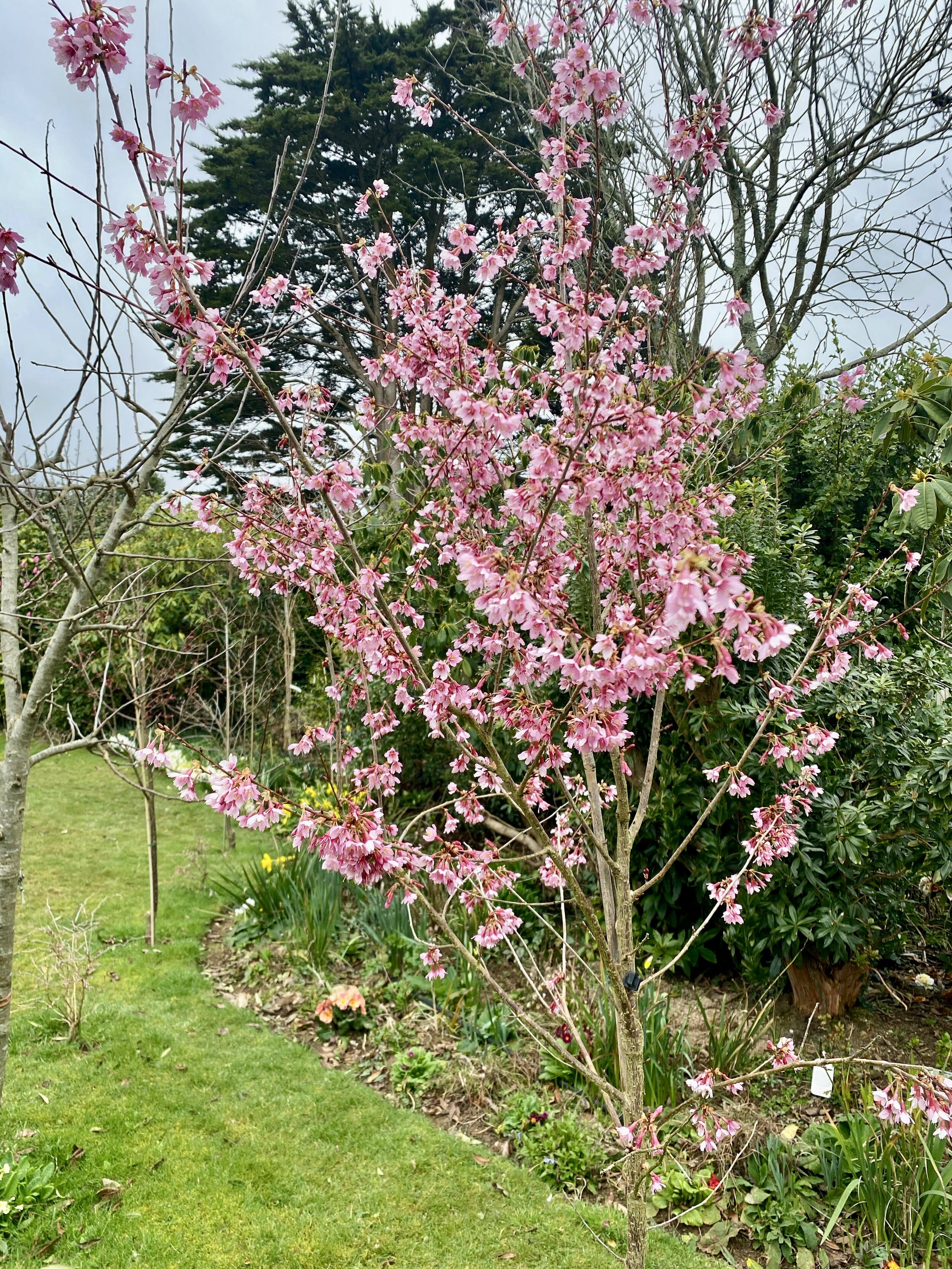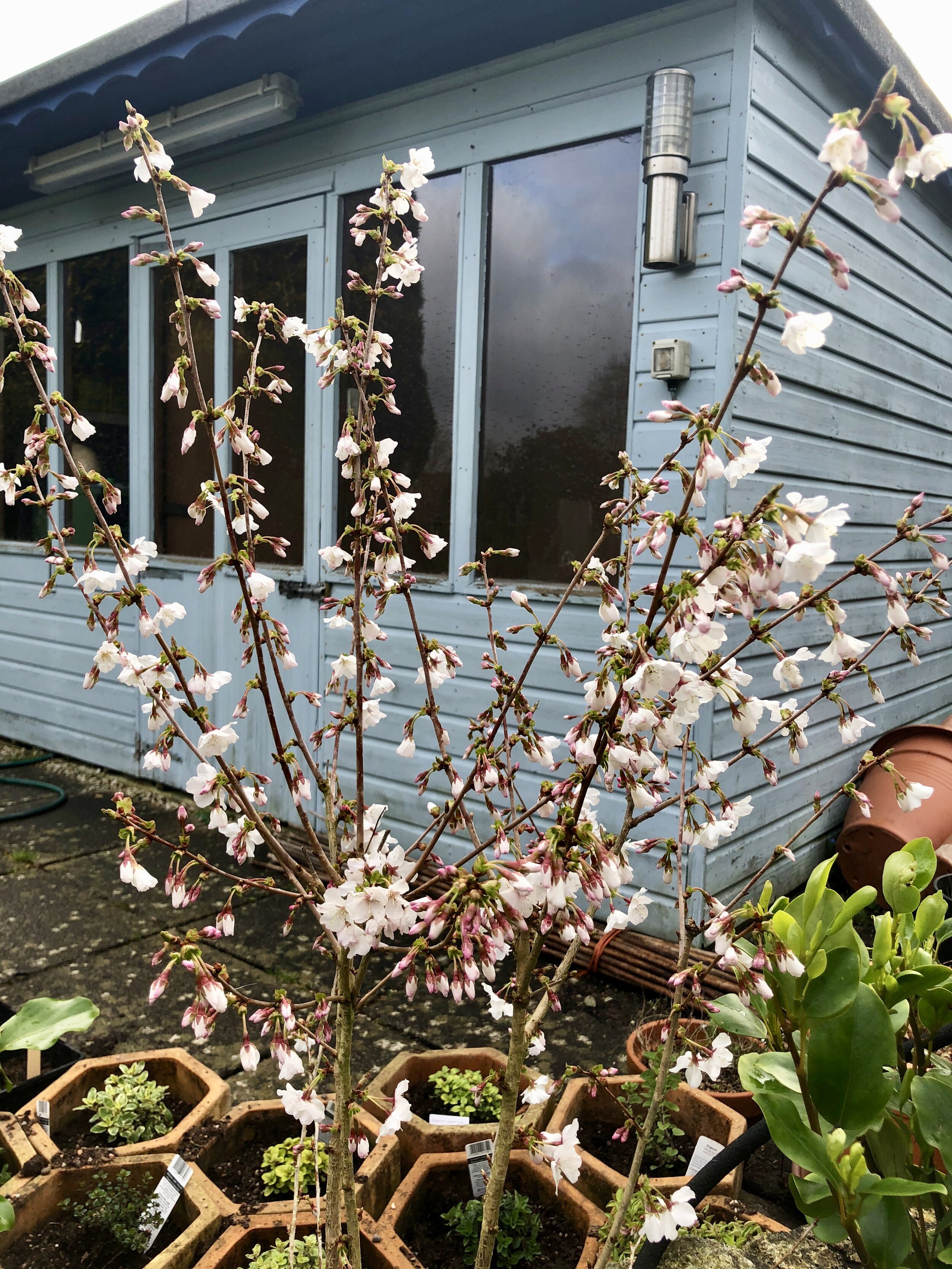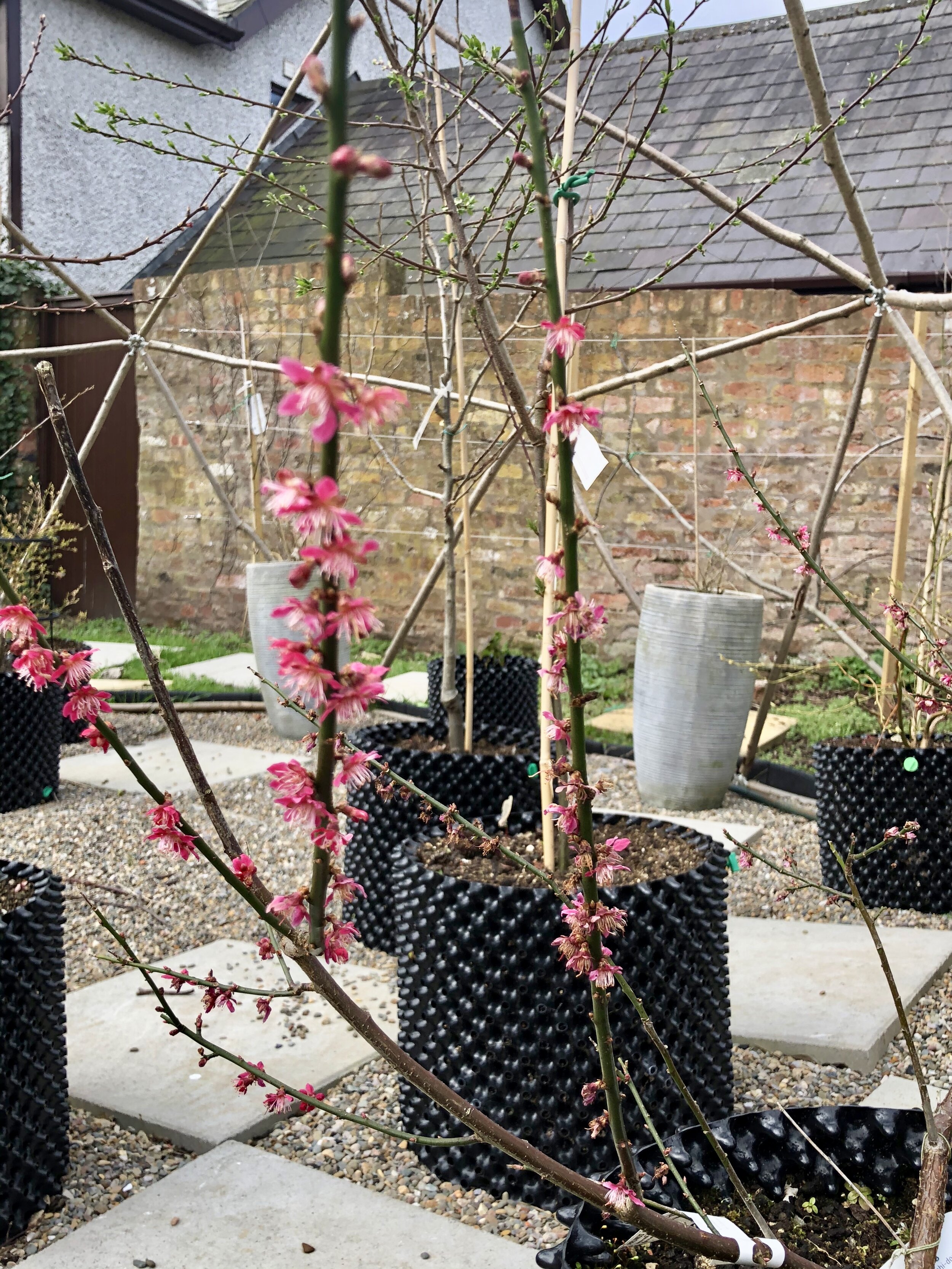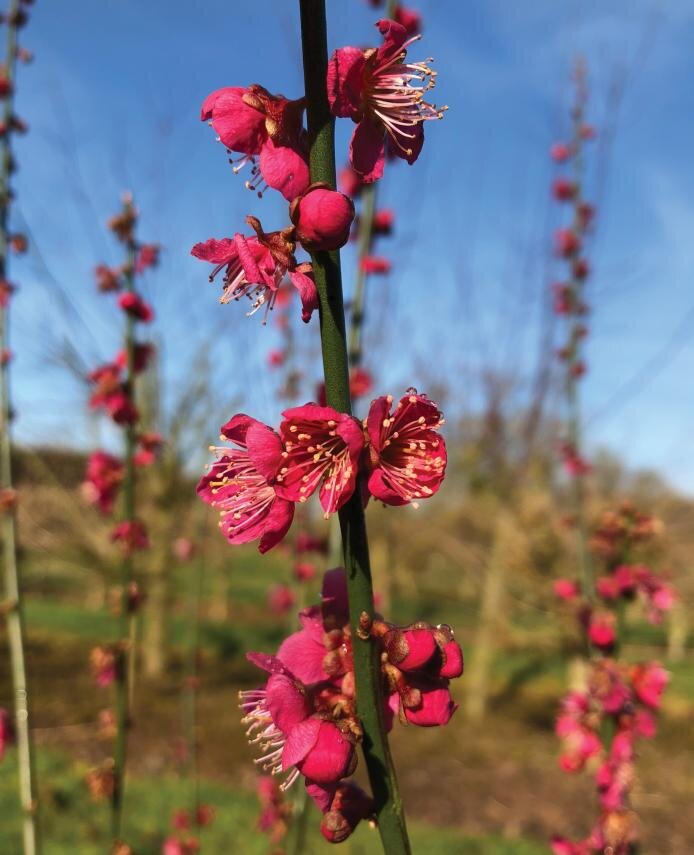46. Spring Prunus Blossom
I spent a few days in Cornwall last week, and spring is about 2-3 weeks ahead of us there. The early flowering cherry trees are in full blossom and looking glorious. I have been discovering the surprisingly wide range of Prunus trees and flowers, and deciding which are the small habit varieties suitable for the walled garden. As well as being highly decorative, they are great for attracting birds to the garden.
My mother has Prunus “Collingwood Ingram” (dark pink blossom) and Prunus “Kursar” (deep pink blossom) in her garden. They flower in March / April and are suitable for small gardens, growing to (2m x 2m) and (3m x 4m) respectively. In the Cornwall garden they are growing a much wider range of Prunus:
Prunus incisa “The Bride” : the Fuji cherry with its small stature and brilliant white blossom,
Prunus campanulata “Felix Jury” with its deep pink flowers
Prunus incisa “Kojo-no-mai”: a very small bush with its lovely pink and white blossom
Prunus serrula : the Himalayan cherry with its copper coloured bark and its tiny white flowers
Prunus x persicoides “Spring Glow” with its pale pink flowers and dark purple branches
Prunus “Amanogawa” : the flagpole cherry with its slender upright habit and late flowering pink blossom.
Prunus “Okame”: pretty nodding shell pink flowers that are good for bees, and small cherries which are good for the birds.
Prunus “Snow goose: with its small upright habit and white blossom with delicate pink stamens.
An arrow of young cherry trees with a weeping Prunus Incisa “Pendula” in the centre and a row of smaller Prunus Incisa “kojo-no-mai” interspersed between them.
Prunus trees come in all sorts of shapes and sizes, so It is important to check the height and spread for your situation. In the walled garden I will be using a row of flagpole Prunus “Amanogawa” trees (H4m x W1m) as a summer privacy screen against one wall, Prunus “Okame” for the birds, Prunus “Collingwood Ingram” (deep pink) and Prunus “The Bride” (snow white) as statement trees and the Himalayan Prunus “Serrula” for its beautiful copper bark. The smaller growing Prunus Incisa varieties (“Kojo-no-mai” and “Brilliant”) will be added to the beds to create lovely bright punctuation marks of blossom in early spring.
The Prunus Mume varieties are much smaller, very slow growing trees that are sometimes called the Chinese Plum or the Japanese Apricot. Their blossoms are the ones that appear in traditional Chinese calligraphy drawings and on Chinese and Japanese ceramics. Prunus Mume “Beni-Chidori” have early flowering very deep dark pink blossom growing directly from the branches. Prunus Mume “Omoi-no-mama” has a similar habit, but with lovely pale pink and white almond scented blossom. The name means ‘without my mother”. These trees are real specimen plants that do well in pots.
There are a number of really good books about flowering cherry trees and the importance of them in different cultures. Monty Don’s “Japanese Gardens” by the BBC has some interesting material about them, and is well worth watching. One of the most famous enthusiasts was a man called “Cherry” Collingham Ingram , the Englishman who saved the Japanese cherry blossoms. For armchair gardeners there is a very good biography about him - also well worth reading. He wrote some of the definitive guides on ornamental cherry trees which are essential reading for all Prunus enthusiasts.
